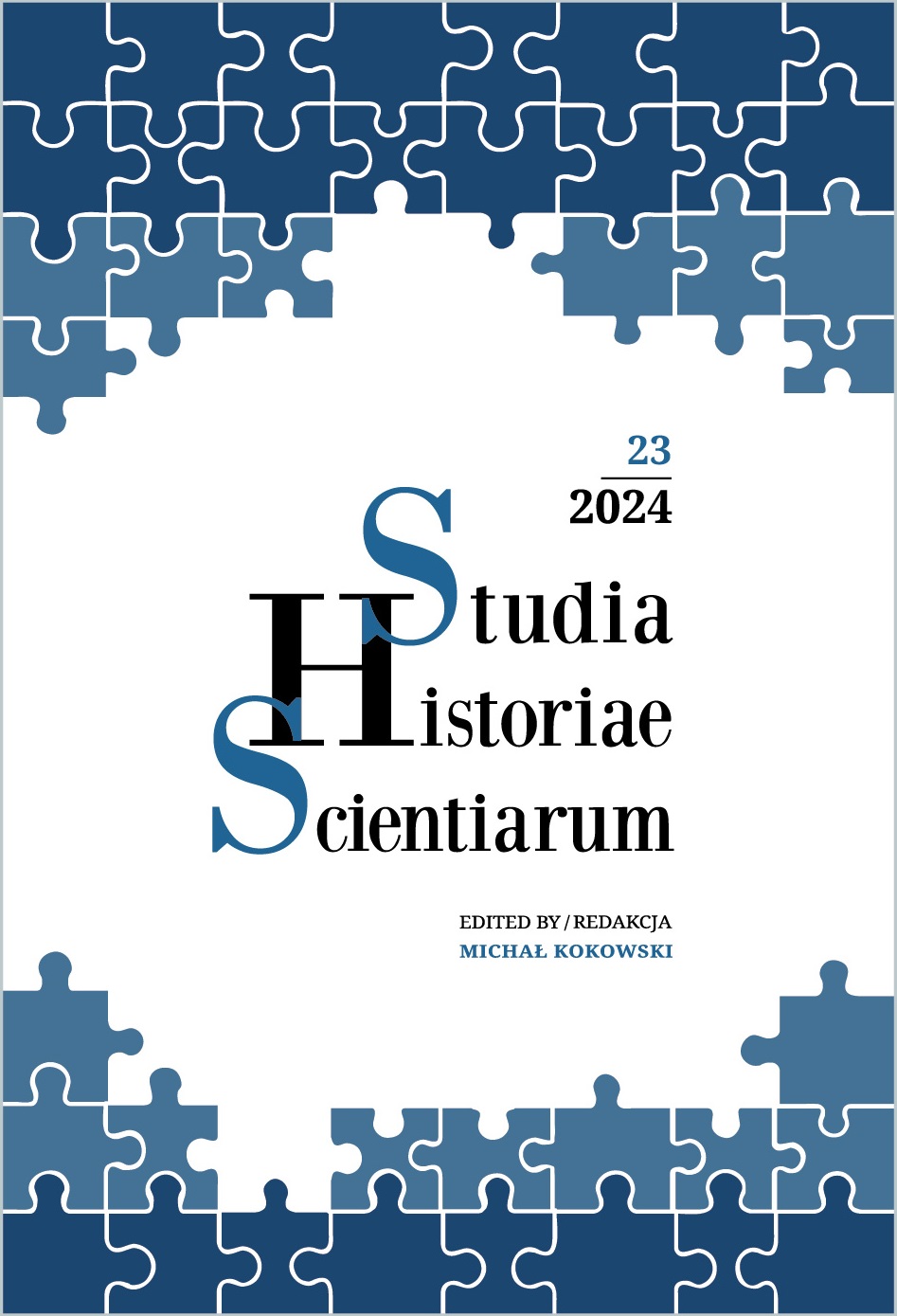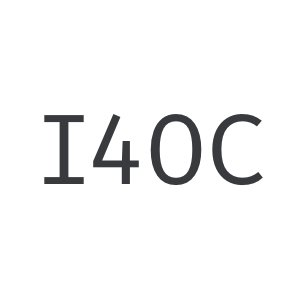Kopernik i kopernikańczycy: Galileusz, Kepler, Bruno
DOI:
https://doi.org/10.4467/2543702XSHS.24.004.19577Słowa kluczowe:
Kopernik, Giordano Bruno, geocentryzm, heliocentryzm, antropocentryzmAbstrakt
Kopernik twierdził, że Ziemia kręci się wokół siebie i Słońca. Uważał również, że wszechświat jest skończony i że na innych planetach nie istnieje inteligentne życie. Galileusz i Kepler podzielali te poglądy, dlatego zasługują na miano kopernikańczyków. A co z Giordanem Brunem? Przyjął filozofię hermetyczną i sprzeciwiał się matematycznej (geometrycznej) metodzie Kopernika; w przeciwieństwie do niego był także zdania, że wszechświat jest nieskończony, a na innych planetach istnieją inteligentne formy życia. Czy możemy zatem zdefiniować Bruna i tych, którzy myślą podobnie jak on, jako kopernikańczyków? Ernan McMullin odpowiada na to pytanie, mówiąc „nie”. W artykule tym będę argumentował, że różnice między Brunem a Kopernikiem wspomniane przez McMullina nie mogą służyć jako kryteria twierdzenia, że Bruno i jemu podobni nie byli kopernikańczykami; zamiast tego twierdzę, że wiara w to, że Ziemia obraca się wokół siebie i Słońca, powinna wystarczyć, aby nazwać kogoś kopernikańczykiem.
Bibliografia
Bacon, Francis 1861: “Descriptio Globi Intellectualis”. In The Works of Francis Bacon: Translations of the philosophical Works, Vol. 5, eds. James Spedding and et al. London: Longman & Co.
Bergerac, Cyrano de 2016: The Other World: The Comical History of the States and Empires of the World of the Moon. Trans. Archibald Lovell. CreateSpace Independent Publishing Platform.
Brake, Mark 2013: Alien life imagined: Communicating the Science and Culture of Astrobiology. New York: Cambridge University Press.
Bruno, Giordano 2018: The Ash Wednesday Supper: A New Translation. Trans. Hilary Gatti.Toronto: University of Toronto Press.
Campanella, Thomas 1994: A Defense of Galileo: The Mathematician from Florence. Trans. Richard J. Blackwell. Notre Dame: University of Notre Dame Press.
Carré, Marie-Rose 1974: “A Man between Two Worlds: Pierre Borel and His Discours nouveau prouvant la pluralité desmondes of 1657”. Isis, 65 (3), 322–335.
Copernicus, Nicolaus 1995: On the Revolutions of Heavenly Spheres. Trans. Charles Glenn Wallis. New York: Prometheus Books.
Danielson, Dennis R. 2001: “The Great Copernican Cliché”. American Journal of Physics, 69(10), 1029–1035.
Danielson, Dennis R. 2014: Paradise Lost and the Cosmological Revolution. New York: Cambridge University Press.
Dick, Steven J. 1982: Plurality of Worlds: The Origins of the Extraterrestrial Life Debate from Democritus to Kant. Cambridge: Cambridge University Press.
Drake, Stillman 1975: “Copernicanism in Bruno, Kepler, and Galileo”. Vistas in Astronomy, 17, 177–192.
Duhem, Pierre 1987: Medieval Cosmology: Theories of Infinity, Place, Time, Void, and the Plurality of Worlds. Trans. Roger Ariew. Chicago: The University of Chicago Press.
Gatti, Hilary 2004: “Giordano Bruno’s Copernican Diagrams”. Filozofski vestnik, 25(2), 25–50.
Granada, Miguel A. 2004: “Aristotle, Copernicus, Bruno: Centrality, the Principle of Movement and the Extension of the Universe”. Studies in History and Philosophy of Science, 35, 91–114.
Guthke, Karl S. 1990: The Last Frontier: Imagining Other Worlds from the Copernican Revolution to Modern Science Fiction. Trans. Helen Atkins. Ithaca: Cornell University Press.
Guthke, Karl S. 2003: “Nightmare and Utopia: Extraterrestrial Worlds from Galileo to Goethe”. Early Science and Medicine, 8(3), 173–195.
Hallyn, Fernand 1990: The Poetic Structure of the World: Copernicus and Kepler. Trans. Donald M. Leslie. New York: Zone Books.
Harries, Karsten 2001: Infinity and Perspective. Cambridge: The MIT Press.
Huygens, Christiaan 2018: Cosmotheoros: Or Conjectures Concerning the Planetary Worlds, and Their Inhabitants. Creative Media Partners. (This translation was first published in 1689).
Johnson, Francis R. & Sanford V. Larkey 1934: “Thomas Digges, the Copernican System, and the Idea of the Infinity of the Universe in 1576”. The Huntington Library Bulletin, 5, 69–117.
Kant, Immanuel 2008: Universal Natural History and Theory of the Heavens. Trans. Ian Johnston. Arlington, Virginia: Richer Resources Publications.
Kepler, Johannes 2002: Harmonies of the World, Book Five. Ed. Stephen Hawking. Philadelphia: Running Press.
Kirschner, Stefan & Andreas Kühne 2015: “The Decline of Medieval Disputation Culture and the ‘Wittenberg Interpretation of the Copernican Theory’”. In The Making of Copernicus: Early Modern Transformations of the Scientist and his Science. (eds. Wolfgang Neuber, et al.). Leiden: Brill.
Kokowski, Michał 2023: Dlaczego nadal interesuje nas Mikołaj Kopernik (1473–1543)? 550-lecie urodzin Mikołaja Kopernika i 150-lecie pierwszego publicznego posiedzenia Akademii Umiejętności w Krakowie. Studia Historiae Scientiarum 23, pp. 71–147. DOI: 10.4467/2543702XSHS.23.003.17694.
Koyré, Alexandre 1957: From the Closed World to the Infinite Universe. Baltimore: The Johns Hopkins Press.
Kuhn, Thomas 2003: The Copernican Revolution: Planetary Astronomy in the Development of Western Thought. Cambridge: Harvard University Press.
Leopardi, Giacomo 1982: “The Copernicus”. In Essays and Dialogues. Trans. Giovanni Cecchetti. Berkeley: University of California Press.
Lovejoy, Arthur O. 2001: The Great Chain of Being: A Study of the History of an Idea. Cambridge: Harvard University Press.
McMullin, Ernan 1987: “Bruno and Copernicus”. Isis, 78(1), 55–74.
Nicolson, Marjorie 1939: “English Almanacs and the ”. Annals of Science, 4(1), 1–33.
Omodeo, Pietro Daniel 2014: Copernicus in the Cultural Debates of the Renaissance: Reception, Legacy, Transformation. Leiden: Brill.
Palter, Robert 1964: “Copernicanism, Old and New”. The Monist, 48/2, 143–184.
Rossi, Paolo 1972: “Nobility of Man and Plurality of Worlds”. In Science, Medicine and Society in the Renaissance: Essays to honor Walter Pagel, Volume Two. Ed. Allen G. Debus, 131–162. London: Heinemann.
Rossini, Paolo 2020: “Changing Conceptions of Mathematics and Infinity in Giordano Bruno’s Vernacular and Latin Works”. Science in Context, 33, 251–271.
Rubenstein, Mary-Jane 2014: Worlds Without End: The Many Lives of the Multiverse. New York: Columbia University Press.
Westman, Robert S. 1975: “The Melanchthon Circle, Rheticus, and the Wittenberg Interpretation of the Copernican Theory”. Isis, 66(2), 165–193.
Westman, Robert S. 2019: “How Did Copernicus Become a Copernican?”. Isis, 110(2), 296–301.
Wilkins, John 2018: The Discovery of a World in the Moone. Frankfurt am Main: Outlook.





























